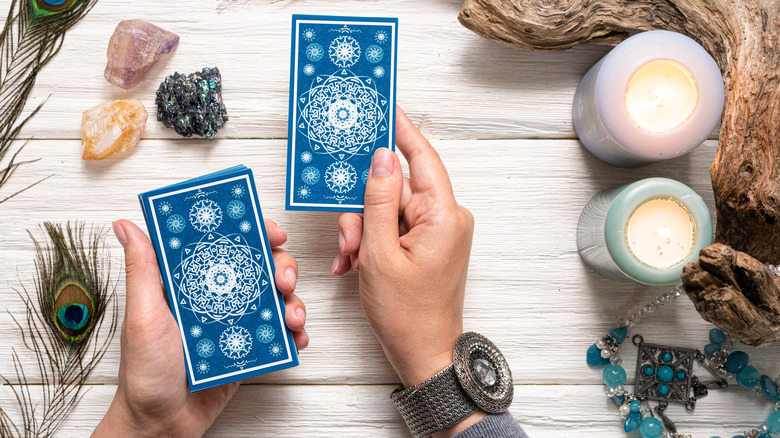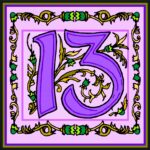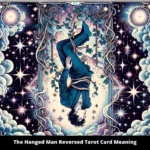The Devil card is one of the most intriguing and oft-misunderstood cards in the Tarot deck. Contrary to its ominous name and imagery, which often evoke fear and apprehension, the Devil card serves as a potent symbol of liberation, self-awareness, and the interplay of light and dark forces within us. As we delve into the multifaceted meanings of this card, we shall uncover how it can catalyze profound shifts in perspective and allow us to explore the shadows lurking in the recesses of our psyche.
At first glance, the artwork associated with the Devil card—typically depicting a horned figure, chained captives, and an array of symbols that suggest temptation—can provoke anxiety. However, beneath this surface lies an invitation to examine one’s relationship with bonds and limitations. The Devil card, housed in the Major Arcana, is part of the collective archetype that represents the universal human experience.
One of the most compelling themes of the Devil card is the notion of entrapment versus freedom. The chains that bind the figures in the image are often misinterpreted as external constraints. In reality, these chains symbolize the shackles of our own making—those self-imposed limitations that hinder personal growth. The Devil encourages introspection: Are we trapped by fear, addiction, or negative thought patterns? It urges us to confront our inner demons rather than succumb to them.
The card also highlights the allure of hedonism and materialism. Society often idolizes the pursuit of pleasure, yet the Devil card serves as a reminder that unchecked indulgence can lead to destructive habits. It prompts an inquiry into whether our appetites and desires are truly fulfilling or simply distractions from deeper existential truths. Herein lies the promise of a paradigm shift; by recognizing these patterns, we are empowered to reclaim autonomy over our choices.
Moreover, the Devil card invites contemplation on the duality of existence. It illustrates the intrinsic connection between light and dark, pleasure and pain, joyous moments and sorrowful experiences. To navigate life effectively, we must learn to embrace both sides of this spectrum. Acknowledging our shadow self—those parts we often deny or suppress—can lead to greater self-awareness and integrity. The transformative power of this recognition can propel us toward genuine authenticity.
In relationship readings, the appearance of the Devil card can signal codependency or unhealthy dynamics. It prompts individuals to evaluate whether their connections with others are based on genuine love or mere attachment. Often, love can morph into a form of control, where feelings of possession overshadow true emotional intimacy. Thus, the Devil card serves as a wake-up call, advising us to disentangle ourselves from toxic relational patterns and to seek connections that foster mutual growth and respect.
Conversely, the Devil card can herald the emergence of necessary passions and desires. Creativity often flourishes when we allow ourselves to bask unapologetically in what fulfills us on a primal level, urging us to explore our fantasies. In this light, the Devil becomes a catalyst for artistic expression, encouraging the embrace of our wildest dreams. However, a balance is essential; indulgence without reflection can sway into recklessness.
Additionally, in the context of career or financial inquiries, the Devil card can signal a fixation on material wealth or status at the expense of personal satisfaction. It raises a pivotal question: Are we pursuing what society deems successful or what truly satisfies our souls? This reflection can be transformative. It compels individuals to seek vocations that align with their innate inclinations rather than succumbing to the cruel machinations of societal expectation.
To navigate the complex implications of the Devil card, self-examination becomes paramount. Engaging in mindful practices such as journaling, meditation, or counseling can reveal the underlying fears and desires that dictate our behaviors. The ultimate goal is liberation—not from external forces, but from the internal chains that bind us. The Devil card lays bare the reality that while we may face temptations external to ourselves, it is our internal struggles that truly dictate the course of our lives.
Understanding the Devil card also encompasses recognizing its position within the greater context of the Tarot. It is flanked by other cards that highlight transformation and enlightenment, such as the Tower and the Star. These connections illustrate a journey: the tumultuous upheaval of the Tower may precede the self-discovery of the Devil card, which then directs us towards the hope and healing embodied in the Star. The Devil provides an essential stepping stone towards transcendence, urging us to confront our fears in order to emerge stronger and wiser.
In its entirety, the Devil card is not a representation of evil but rather a profound acknowledgment of the complexities of the human experience. It promises a shift in perspective for those daring enough to delve into their own depths. By recognizing the interplay of our desires, fears, and aspirations, we can cultivate a richer understanding of ourselves and the paths we traverse. In surrendering to the lessons of the Devil, we unlock the potential for remarkable growth, deeper connections, and a more authentic existence.









Leave a Comment